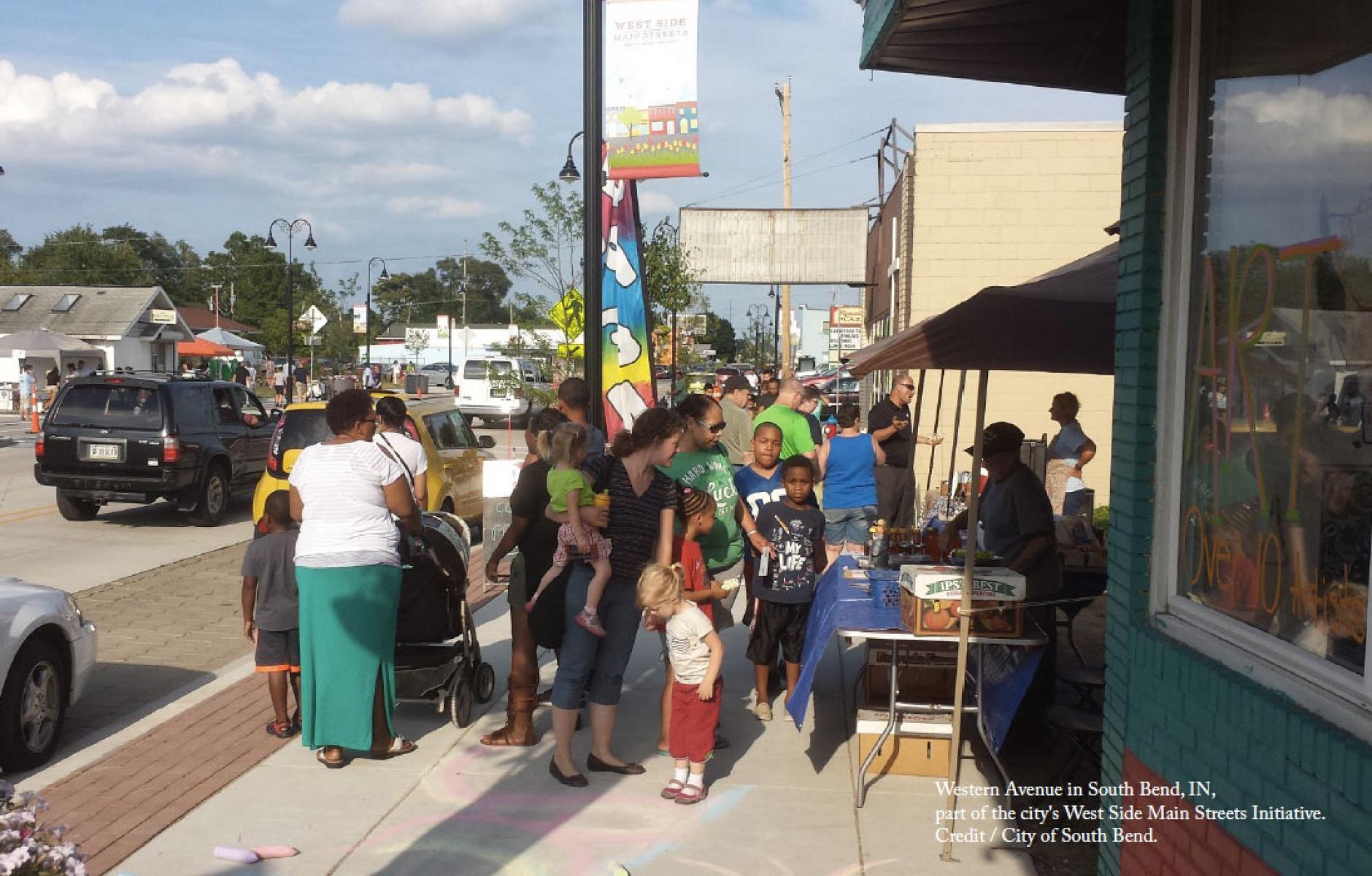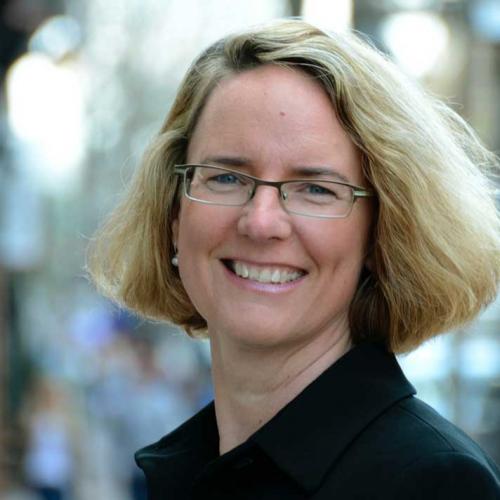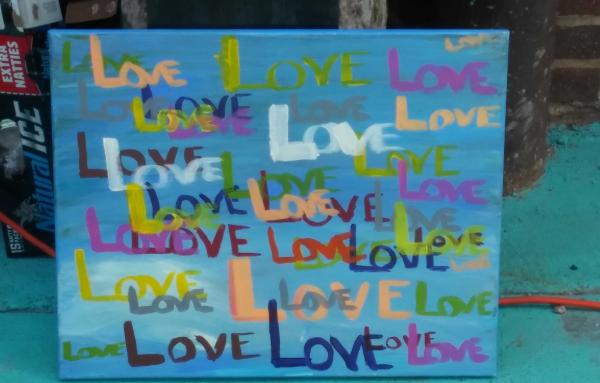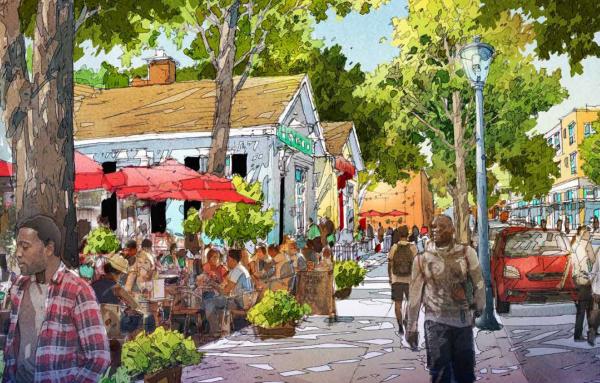
Building Local Strength: Emerging Strategies for Inclusive Development
In 2007, I was on a technical assistance team working to revitalize and tame Denver’s East Alameda corridor. My colleagues Dena Belzer, Jim Charlier, and Tim Van Meter (all current or former CNU members) and I were looking at three different nodes along the corridor, two with relatively simple design solutions. The third, a strip shopping center with a number of small local and international stores, sparked an intense and memorable debate among the team members. As we started to talk about the different ways to transform this strip mall, Dena was adamant that we look at how this retail was serving the needs of the surrounding community. Can solutions be neighborhood-based? How could we bring investment to the site while supporting the existing businesses and residents?
This debate is taking place all over the country, even today. As Dena rightly pointed out, what the community needed (and wanted) in a revitalization strategy was paramount to the project’s success. We needed to develop design strategies and approaches that could help revitalize this community in ways that served existing residents, minimized displacement, and increased access to opportunity.
I’ve been working in communities across the country for over 25 years, most of which has been focused on the technical aspects and implementation of practices that create vibrant, prosperous places. When the new urbanist movement was founded, aligning transportation and land use seemed revolutionary. Designing streets and public places that put people first seemed rebellious. For a long while, this is the approach that set our movement apart–and we had a great deal of success in making walkable, urban places a desirable commodity. Yet, as the conversation in Colorado over ten years ago demonstrates, design strategies alone won’t ensure that good urban design, land use, and public spaces will be accessible and equitable.
The Charter itself, over twenty-five years old now, speaks directly to this issue. The economic and social problems felt so acutely in cities across the country stem from racially motivated planning and financial practices that intentionally destroyed some neighborhoods, while leaving others to stagnate for decades. Design alone cannot fix this. But economic and social vitality, community stability, and even environmental health can rarely flourish without good design. Now is the time to change the way we approach our work to ensure that we are meeting the needs of legacy residents and directing resources towards neighborhoods that have lacked it.
At a recent meeting of the Board, we discussed at length the practical strategies needed to create more equitable and inclusive development, including more affordable neighborhoods and access to housing. The conversation was mostly focused on tools: the technical elements of how to create place. Yet what was missing from this conversation was how to collaborate with legacy residents, changing where and how tools are contextualized and applied collaboratively with neighborhood residents. At the end of the day, Emily Talen summed it up well by saying, “After 25 years, we (those of us working in communities) know what to do, but we haven’t figured out how to plug these tools in as an intrinsic part of placemaking. Creating well-designed mixed-income neighborhoods with housing that is affordable requires much more than physical design.”
Yet while there is no single solution to a problem this multifaceted, there are examples of interesting development happening in ways that did what Emily was stressing: plugging known tools into communities in a different way. Monte Anderson was creating a neighborhood “shark tank” in South Dallas to help revitalize a strip mall; Maurice Cox told me of the work of David Alade of Century Partners who were working with legacy residents to reclaim parts of Detroit, block by block. Once we began looking for these examples, we found more than we’d expected.
This week, CNU released its latest report: Building Local Strength: Emerging Strategies for Inclusive Development, which highlights communities, organizations, and developers that are seeking to deliver inclusive revitalization through creative melding of policies and programs. The report is built on research and interviews with neighborhood advocates, developers, real estate professionals, CNU members, city staff, and other practitioners. It includes a case-study-style look at eight projects, many still underway, where more equitable and inclusive outcomes are being sought in very different circumstances across the country. We also begin to put together the tools and policies that can be used in combination to help ensure more equitable outcomes.
This report is not intended as a comprehensive survey of all possible strategies or examples. Indeed, we hope and challenge CNU members, community advocates, and our partners to send more examples of how city leaders, neighborhood stakeholders, developers, and others are working to create vibrant inclusive neighborhoods that reverse decades of racism and exclusion. With partners, we want to create a community of practice that will dramatically expand the flow of these strategies and accelerate the redevelopment and revitalization of underserved communities across the country.
Building Local Strength is the next step for CNU and its members; understanding where inclusive development is happening and highlighting the innovative local actors in this field. More research into why these outcomes aren’t guaranteed will help CNU, along with a coalition of partners, develop the necessary policies and tools to make inclusive development more easily attainable. I hope it adds knowledge that will support community efforts to seek revitalization for their neighborhood; increasing access to opportunity while minimizing the impacts of displacement.
CNU is committed to continuing this work because of how essential equitable access is to the full benefits of good urbanism and the wellbeing of current and future generations.
I hope you’ll join me in this journey.







